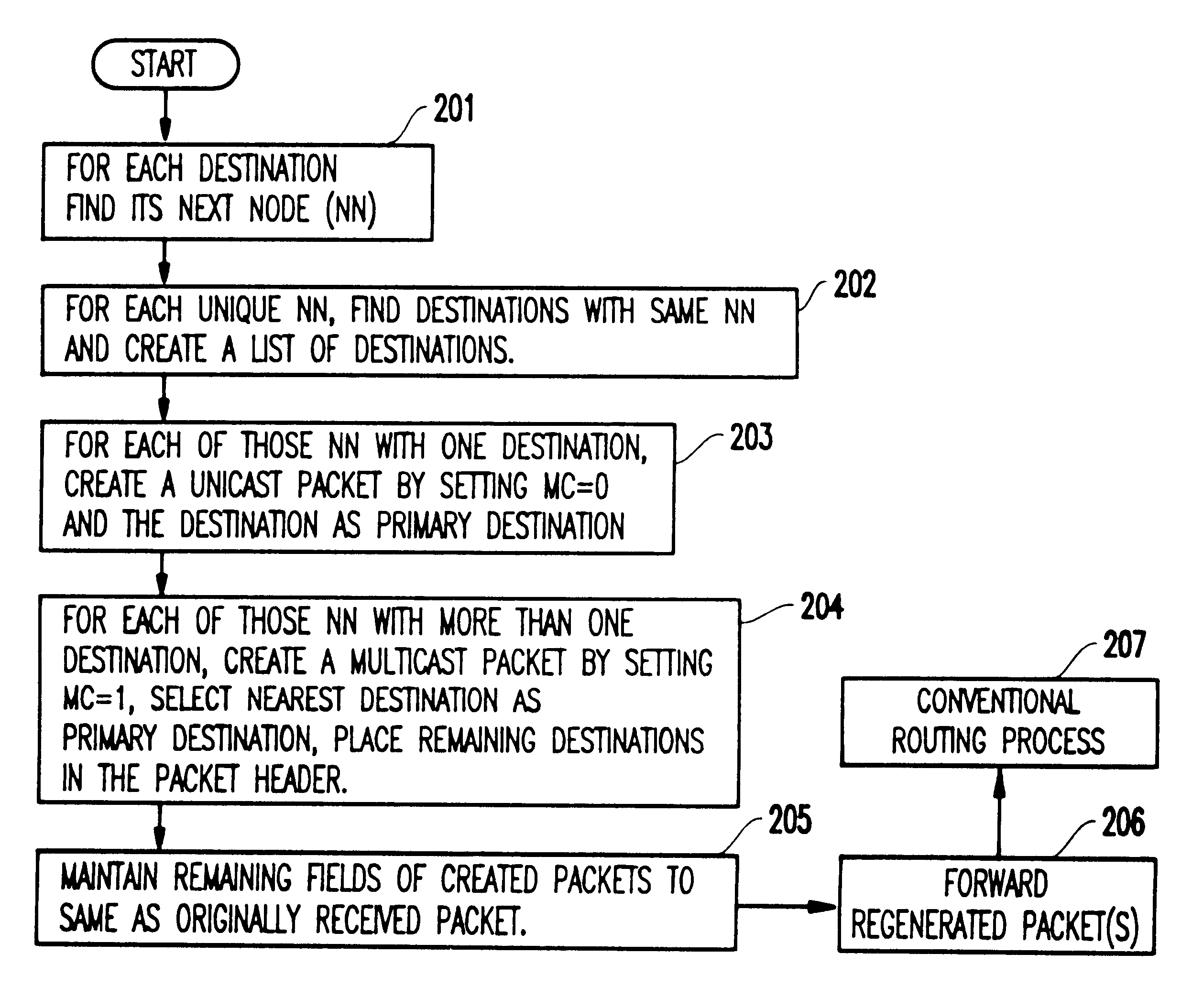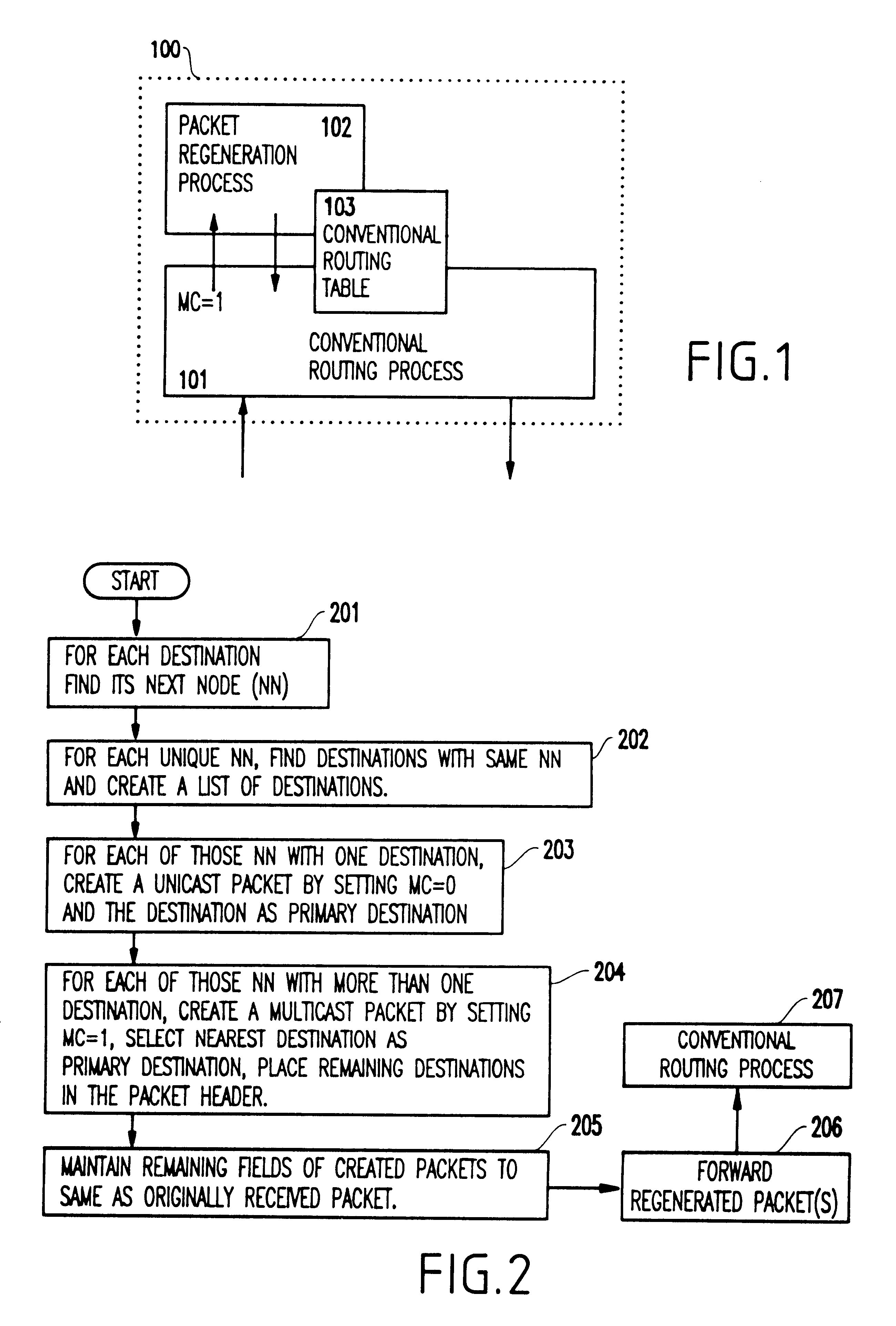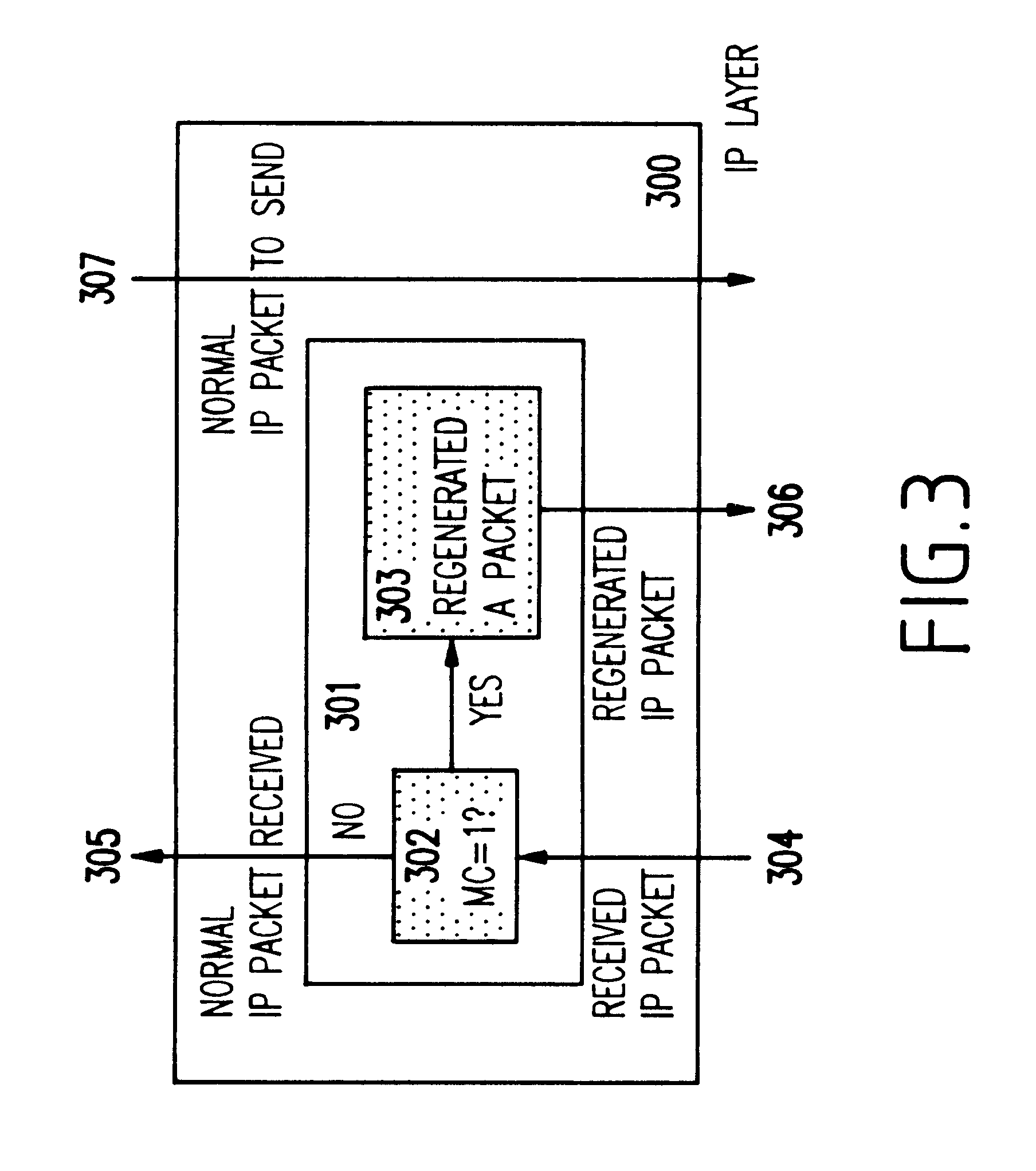System and method for amicable small group multicast in a packet-switched network
a packet-switched network and small group multicast technology, applied in the field of world wide networks, can solve problems such as inability to support very large numbers of small group multicasts
- Summary
- Abstract
- Description
- Claims
- Application Information
AI Technical Summary
Benefits of technology
Problems solved by technology
Method used
Image
Examples
embodiment
PREFERRED EMBODIMENT
Generally, the present invention provides a system and method for creating small group multicast network without disrupting the existing unicast network, and yet which provide guaranteed delivery of multicast packet to all destinations even if there is no new router capable of supporting multi casting in the network.
The present invention assumes that each multicast packet has an indicator indicating that the packet is a multicast packet (i.e., MC=1), one of the multicast destination(s) is placed in the packet destination field and carries a list of remaining multicast destinations in the packet header. Any packet with MC=0is judged as a unicast packet, and therefore its destination field carries the packet destination itself.
In the invention, a multicast packet (MC=1) is denoted by (S, Dp, 1(D1,D2, . . . ,Dk)) as shown below in Table 1 where:
A packet that travels in a packet switched network such as the Internet carries, in addition to the above information, many...
PUM
 Login to View More
Login to View More Abstract
Description
Claims
Application Information
 Login to View More
Login to View More - R&D
- Intellectual Property
- Life Sciences
- Materials
- Tech Scout
- Unparalleled Data Quality
- Higher Quality Content
- 60% Fewer Hallucinations
Browse by: Latest US Patents, China's latest patents, Technical Efficacy Thesaurus, Application Domain, Technology Topic, Popular Technical Reports.
© 2025 PatSnap. All rights reserved.Legal|Privacy policy|Modern Slavery Act Transparency Statement|Sitemap|About US| Contact US: help@patsnap.com



